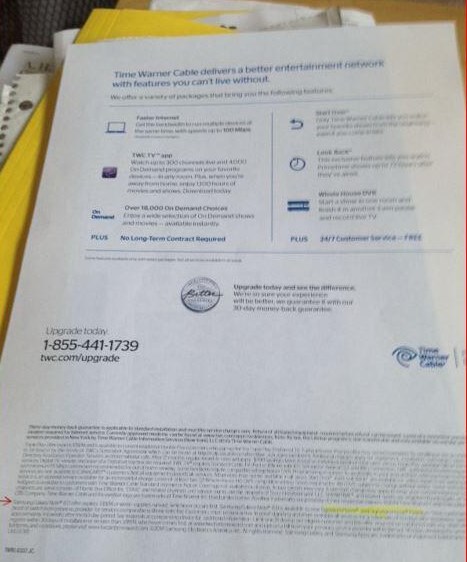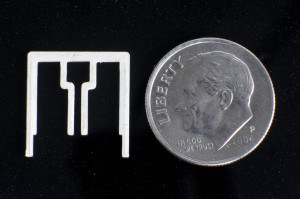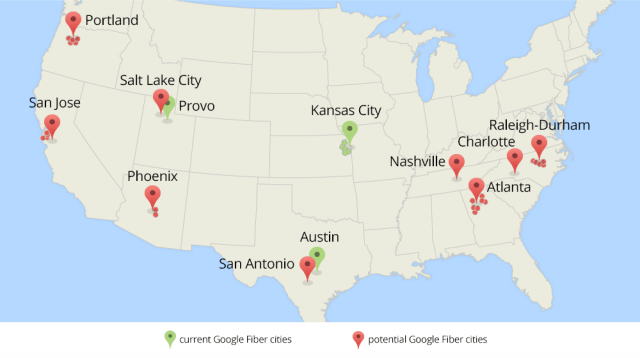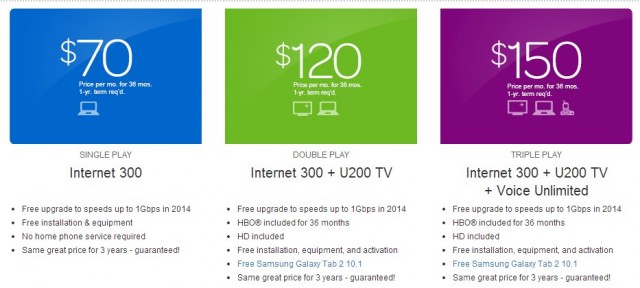 AT&T U-verse with Gigapower is not coming to a home near you, although AT&T hopes you believe it will.
AT&T U-verse with Gigapower is not coming to a home near you, although AT&T hopes you believe it will.
In the public and government relations arena, convincing everyone there is robust competition in broadband is a good prescription to keep the regulators at bay. To make that happen, AT&T continues to roll out more press releases than actual fiber to the home service, this time announcing it is planning to bring its fastest gigabit Internet service to “six cities in North Carolina” and more areas in and around Austin.
“The U-verse GigaPower fiber-optic service will be offered in parts of Carrboro, Cary, Chapel Hill, Durham, Raleigh and Winston-Salem, North Carolina,” AT&T said today in a statement.
But AT&T will not say exactly how many homes it will offer service to, but gave a clue mentioning it plans to connect as many as 100 businesses and 100 “public sites.” It also said it will provide a free, but slow-speed service to as many as 3,000 homes — something it can offer on its existing copper-fiber U-verse platform.
AT&T claims it is ‘racing’ to offer fiber service, but evidence suggests otherwise. Much of AT&T’s U-verse with Gigapower is turning up in condos, new housing developments, and other multi-dwelling units like apartments. Single family homes are evidently not a priority. AT&T’s costs to bring fiber to the back of a complex or large apartment building is lower than stringing or burying fiber to individual homes.
In Austin, one of AT&T’s major Gigapower expansions will come to communities under construction and condo complexes developed by PulteGroup. AT&T signed a favorable agreement with the developer to bring fiber into up to 3,000 homes. AT&T routinely signs similar agreements with developers that offer AT&T exclusive access to existing inside wiring and, in some cases, provide AT&T services to every resident, billed as part of the rent or neighborhood association service fees, deterring competition from cable operators.
AT&T likely selected the communities in North Carolina after receiving a Request For Proposals from a regional group called North Carolina Next Generation Network, which has enticed private providers to build gigabit fiber networks. The coordinated effort is led by six municipalities and four leading research universities and supported by local Chambers of Commerce and businesses in the Research Triangle and Piedmont regions.
With local governments directly involved in the initiative, AT&T was likely satisfied they would not face much difficulty from zoning and permitting procedures to expand their network, and might even receive favorable treatment.


 Subscribe
Subscribe
 “Yes, that’s true,” wrote Lieber. “But it was in 1/16 of an inch everywhere. I don’t find that acceptable. Do you?”
“Yes, that’s true,” wrote Lieber. “But it was in 1/16 of an inch everywhere. I don’t find that acceptable. Do you?”

 Now that we’ve learned a lot from our Google Fiber projects in
Now that we’ve learned a lot from our Google Fiber projects in 

